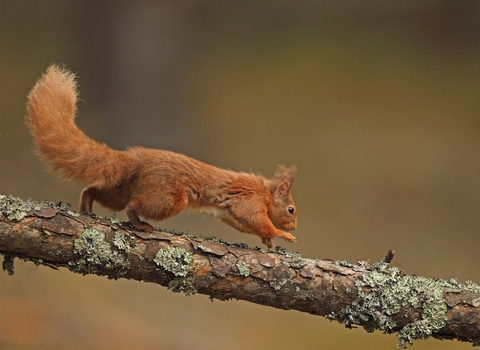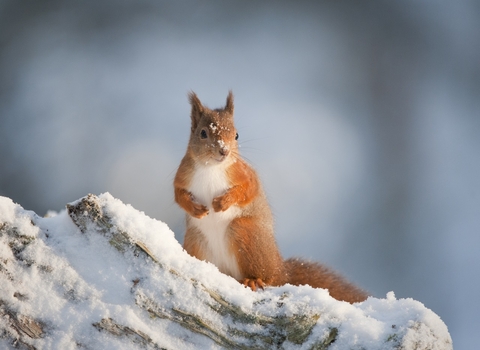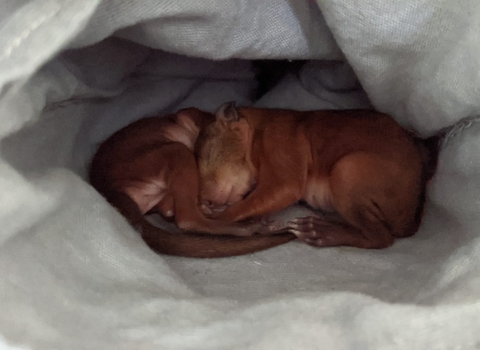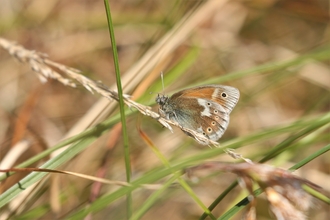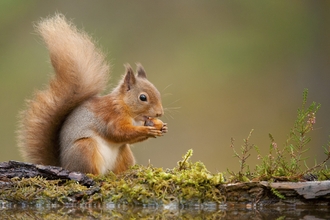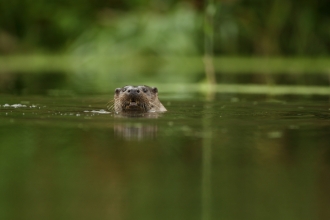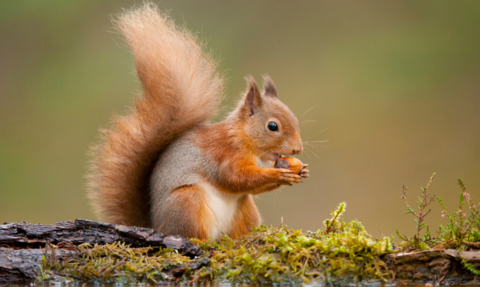
Mark Hamblin/2020VISION
Red Squirrel Recovery Network
The Red Squirrel Recovery Network is working to support the recovery of our native red squirrel in the UK.
The Red Squirrel Recovery Network (RSRN) is an ambitious project which will work at a super-landscape scale to bring about lasting change for red squirrels, who would be lost in 10 years without continuous and extensive conservation efforts.
Once common across the UK, red squirrels are now limited to isolated populations in the North of England, Merseyside, Isle of Wight, North Wales and Scotland. The Red Squirrel Recovery Network is an ambitious and exciting project linking up partners including Northumberland Wildlife Trust, Cumbria Wildlife Trust, the Wildlife Trust for Lancashire, Manchester and North Merseyside, Scottish charities Bright Green Nature and Galloway & Southern Ayrshire Biosphere partnership, as well as Merseyside-based Knowsley Safari Foundation and the UK Squirrel Accord.
We are at a critical point for the recovery of red squirrels across the UK. For the first time, RSRN will bring together conservation partners and 50+ volunteer groups to work across the Southern Scotland/ Northern England red squirrel range. Due to grey squirrel areas now firmly established to the north and south of this area, and grey squirrel incursion (invasion) occurring regularly, red squirrels in this region are extremely vulnerable to extinction.
Red squirrel numbers plummeted across the UK over the past century, because of loss of habitat, hunting and the introduction of grey squirrels by the Victorians. As well as competition for food and space, grey squirrels carry a pox which infects and kills reds. It’s a horrible death for one of our favourite creatures.
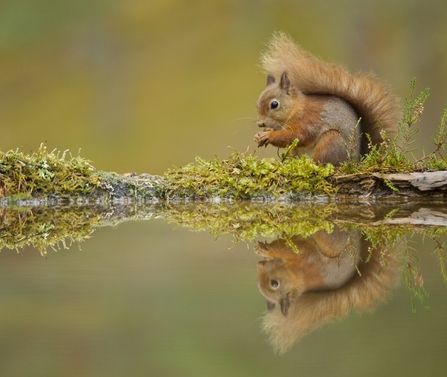
Seeing double; A red squirrel (Sciurus vulgaris)
Photo by Mark Hamblin
What have we achieved so far?
Together with our partners, we have already completed a one-year development phase of the project, gathering and collating vital data upon which the project is built. This has included collecting baseline data across the entire project area on squirrel distribution, grey squirrel management activities, and volunteer demographics.
This has allowed our red squirrel experts to draw up conservation plans, along with developing the methodology for future large scale grey squirrel fertility control. Extensive communication and volunteer engagement plans have also been developed to help encourage new volunteers.
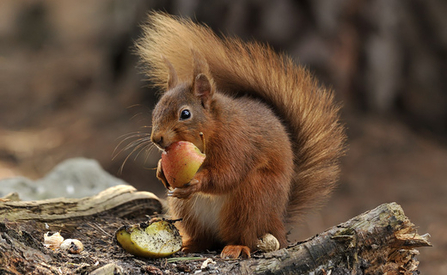
Photo by John Bridges
What will the Red Squirrel Recovery Network achieve?
The Red Squirrel Recovery Network is a five-year project which aims to achieve a number of practical benefits for our endangered red squirrels:
Habitat improvement
We have already spent decades supporting the population of red squirrels in Merseyside and this project will allow our dedicated team to continue, and build upon, this work.
Create a network of volunteers and citizen scientists
People will be central to the Red Squirrel Recovery Network – we simply couldn't do it on our own. We will be working to increase the number of opportunities for volunteers to get involved and make a real difference for our red squirrels. We will also provide further support and training for existing volunteer groups, including providing small grants to help volunteer groups links up and undertake more ambitious projects. This will create a network of citizen scientists right across the project’s geographical range.
Don’t Be Shy
We will also be working hard to educate and inform the public about red squirrels, the challenges they face, and how they can help. Spreading the story of red squirrels far and wide.
Grey squirrel fertility control
The sad truth is that without undertaking grey squirrel control, red squirrels would be extinct in the UK in under 10 years. However, this project will also see us working on developing an effective methodology for the future deployment of grey squirrel fertility control.
You can find out more about grey squirrel control in our Red Squirrel FAQs.
Secure future funding
We will work with current and new partners to secure a future for reds, and resilient woodlands and forests across the North of England and Southern Scotland – this will include working with partners and landowners to establish new income streams for red squirrel conservation.
Working together
Being part of the extensive Red Squirrel Recovery Network will allow us to improve data sharing across the area to build a more coherent picture of the current state of our red squirrel populations and model the likely impact of new game-changing interventions.
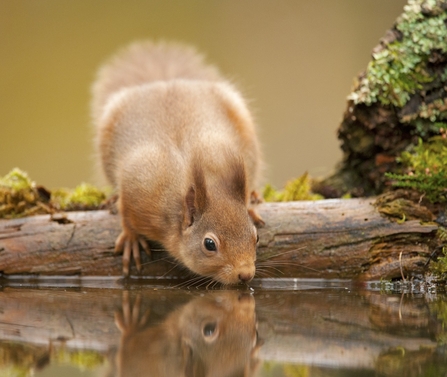
The Red Squirrel Recovery Network will help establish new income streams for future conservation
Photo by Mark Hamblin
How can you help?
People will be vital to the success of the Red Squirrel Recovery Network and helping to secure the survival of red squirrels in our area and beyond.
Members of the public are encouraged to participate by reporting squirrel sightings, volunteering for conservation projects, and spreading awareness through social media. How you can help:
🐿️ Report sightings: Keep an eye out for red squirrels and let us know when you spot one.
Report your red squirrel sightings
🫵 Volunteer: Join our conservation projects.
📢 Spread the word: Use #DontBeShy on social media to share your experiences and educate others.
📝 Participate in surveys: Help us gather crucial data on red squirrel populations and public awareness.
🌳 Plant native trees: Create squirrel-friendly habitats in your area.
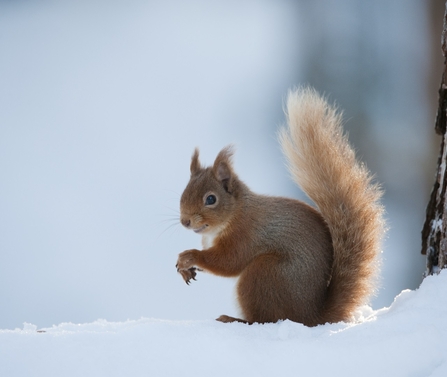
A smiling squirrel in the snow
Photo by Mark Hamblin
Want to find out more about red squirrels and our work to save them?
We have been working to conserve our precious population of red squirrels in Merseyside for decades. You can find out more about what we do and why below.

The Red Squirrel Recovery Network is made possible by The National Lottery Heritage Fund, with thanks to National Lottery players.


